Welcome to Philadelphia, the City of Brotherly Love, where history, culture, and diversity come together to create a vibrant urban experience. Known for its pivotal role in American history, Philadelphia is home to an array of remarkable landmarks and attractions, as well as a rich tapestry of neighborhoods, each boasting their unique charm and character.
To better understand and navigate this bustling city, Philadelphia is divided into various Planning Analysis Sections (PAS). These groupings offer a convenient way to explore the distinct aspects of the city’s neighborhoods, allowing visitors and residents alike to appreciate the full spectrum of what Philadelphia has to offer.
In this comprehensive guide, we’ll delve into the city’s storied past, its cultural and demographic landscape, and highlight the key attractions and landmarks that make Philadelphia truly one-of-a-kind. As we explore the Planning Analysis Sections, you’ll discover standout neighborhoods and hidden gems that deserve a closer look. We’ll also venture beyond the city limits to explore the charming smaller towns and communities that surround Philadelphia, further enriching your experience of this incredible region.
So, join us as we embark on a journey through Philadelphia, immersing ourselves in the city’s history, culture, and the welcoming spirit that has earned it the enduring moniker, the City of Brotherly Love.
History of Philadelphia
Founded in 1682 by William Penn, Philadelphia has played a central role in the history of the United States. The city was not only the meeting place for the founding fathers but also served as the nation’s capital from 1790 to 1800. As we delve into the rich history of Philadelphia, we’ll explore key events, milestones, and landmarks that have shaped the city and its neighborhoods.
The birthplace of American democracy, Philadelphia was the site of the First and Second Continental Congresses, held in the Pennsylvania State House, now known as Independence Hall. It was here that the Declaration of Independence was adopted on July 4, 1776, and the U.S. Constitution was drafted in 1787, laying the foundation for the United States as we know it today.
Throughout its history, Philadelphia has been a hub for innovation and industry. In the 19th century, the city witnessed rapid industrialization, becoming a major center for textiles, manufacturing, and shipbuilding. This period saw the rise of distinctive neighborhoods, each reflecting the city’s economic growth and the influx of immigrants from various parts of the world.
Philadelphia’s storied past is etched in its streets and landmarks, with historic sites like the Liberty Bell, Independence Hall, and the Betsy Ross House serving as enduring reminders of the city’s pivotal role in American history. As you explore the city’s diverse neighborhoods, you’ll encounter fascinating museums, such as the Museum of the American Revolution and the National Constitution Center, which offer deeper insights into the city’s rich heritage.
From its early days as a Quaker settlement to its position as a powerhouse of American innovation and progress, Philadelphia’s history is an essential part of the fabric that makes up this captivating city. As we journey through its Planning Analysis Sections, we’ll uncover the stories and events that have shaped each neighborhood, adding depth and context to your exploration of the City of Brotherly Love.
Culture and Demographics
Philadelphia’s rich cultural tapestry and diverse demographics are integral to the city’s unique identity. As the sixth-largest city in the United States, Philadelphia is home to over 1.5 million residents, with a diverse population that includes a mix of various ethnicities, cultures, and traditions.
Throughout the city’s history, waves of immigration have contributed to the growth and development of its neighborhoods. European settlers, primarily from England, Ireland, Germany, and Italy, initially shaped the city’s cultural landscape. Later, African Americans, Asians, Latinos, and Caribbean communities added their distinctive influences, further enriching Philadelphia’s cultural fabric.
This cultural diversity is reflected in the city’s many neighborhoods, each boasting their own unique character and heritage. For instance, the Italian Market in South Philadelphia is the nation’s oldest and largest working outdoor market, reflecting the neighborhood’s strong Italian roots. Similarly, the vibrant murals in the predominantly Puerto Rican neighborhood of El Centro de Oro in North Philadelphia celebrate the area’s Latino heritage.
Philadelphia is also a city with a thriving arts scene, which is showcased in its numerous museums, galleries, and performing arts venues. The world-renowned Philadelphia Museum of Art, the Barnes Foundation, and the Pennsylvania Academy of the Fine Arts are just a few examples of the city’s commitment to artistic expression. In addition, the city hosts various cultural festivals throughout the year, such as the annual Odunde Festival celebrating African American culture and the Philadelphia Film Festival showcasing international and independent cinema.
As we explore the Planning Analysis Sections, we’ll discover how the cultural influences and diverse demographics of Philadelphia have shaped the city’s neighborhoods, resulting in a dynamic and ever-evolving urban landscape. From the lively street festivals to the eclectic culinary offerings, the City of Brotherly Love offers a rich cultural experience that is sure to captivate and inspire.
Planning Analysis Sections (PAS) Overview
To better appreciate and navigate the diverse neighborhoods of Philadelphia, the city is organized into various Planning Analysis Sections (PAS). These sections serve as a useful framework for understanding the different areas of the city, their unique characteristics, and the attractions they have to offer. Each PAS encompasses a collection of neighborhoods, providing a comprehensive perspective on the city’s urban landscape.
Here’s a brief overview of the Planning Analysis Sections in Philadelphia and their corresponding neighborhoods:
- Upper Far Northeast: Bustleton, Somerton, Parkwood, Torresdale
- Lower Far Northeast: Ashton, Bensalem, Byberry, Holmesburg, Ryers, Lexington Park
- Lower Northwest: Chestnut Hill, Mount Airy, Germantown
- Lower Southwest: Kingsessing, Elmwood Park, Penrose, Eastwick
- University Southwest: University City, Powelton Village, Mantua
- West: Haddington, Carroll Park, Overbrook, Wynnefield, Saunders Park
- West Park: Parkside, Belmont Village, Wynnefield Heights
- Lower Northeast: Frankford, Lawncrest, Oxford Circle
- River Wards: Fishtown, Kensington, Port Richmond
- Lower North: Brewerytown, Fairmount, Spring Garden, Poplar
- North: Temple University area, Hartranft, Yorktown
- Central: Center City, Rittenhouse Square, Old City, Chinatown
- South: South Philadelphia, Passyunk Square, East Passyunk, Girard Estate
- Lower South: Navy Yard, Packer Park, Sports Complex area
- Upper Northwest: Roxborough, Manayunk, Andorra
- Upper North: Hunting Park, Nicetown-Tioga, Logan
- Central Northeast: Fox Chase, Rhawnhurst, Mayfair
- North Delaware: Tacony, Holmesburg, Bridesburg
As we explore the Planning Analysis Sections in this guide, we’ll highlight key attractions, landmarks, and standout neighborhoods within each area. This approach will provide a thorough understanding of Philadelphia’s diverse neighborhoods and help you discover hidden gems and local favorites that make each PAS unique.
By using the PAS framework, we can delve deeper into the city’s history, culture, and demographics, revealing the vibrant mosaic that is Philadelphia. From the lively streets of South Philadelphia to the historic charm of Old City, each Planning Analysis Section offers a distinct experience that showcases the City of Brotherly Love in all its dynamic complexity.
Key Attractions and Landmarks by PAS
Philadelphia is home to a plethora of attractions and landmarks, each offering a unique experience for visitors and residents alike. In this section, we’ll highlight some of the most famous attractions and landmarks within each Planning Analysis Section, providing you with a taste of the cultural, historical, and recreational experiences awaiting you in the City of Brotherly Love.
Upper Far Northeast
Benjamin Rush State Park: This expansive park, named after the founding father and physician Benjamin Rush, offers an urban oasis for outdoor enthusiasts in Northeast Philadelphia. With hiking trails, community gardens, and open fields, it’s a popular destination for nature lovers, birdwatchers, and families seeking respite from the city’s hustle and bustle.
Cairnwood Estate: Nestled in the historic Bryn Athyn district, Cairnwood Estate is a stunning Gilded Age mansion surrounded by lush gardens and picturesque landscapes. This architectural gem, designed by Carrère and Hastings, now serves as an event venue and a fascinating window into the opulence of the early 20th century.
Lower Far Northeast
Pennypack Park: Stretching along the Pennypack Creek, this sprawling park boasts miles of trails, historic bridges, and diverse wildlife, providing a serene natural escape for city dwellers. The park’s abundant recreational opportunities make it a favorite among hikers, cyclists, and families.
Glen Foerd on the Delaware: This elegant riverside estate combines art, history, and nature, featuring a Gilded Age mansion, lush gardens, and an art gallery. Visitors can explore the picturesque grounds, attend special events, or delve into the estate’s rich history through guided tours.
Lower Northwest
Cliveden: A historic site in Germantown, Cliveden played a pivotal role in the 1777 Battle of Germantown during the American Revolutionary War. Today, the well-preserved mansion and grounds serve as a museum, offering visitors a glimpse into Philadelphia’s colonial history.
Wissahickon Valley Park: Encompassing over 2,000 acres of lush forest, meadows, and the scenic Wissahickon Creek, this park is a haven for outdoor enthusiasts. With over 50 miles of trails, picturesque waterfalls, and historic landmarks, it’s a perfect destination for hiking, biking, and birdwatching.
Lower Southwest
John Heinz National Wildlife Refuge: Located near the Philadelphia International Airport, this 1,000-acre refuge protects diverse wildlife and provides vital habitat for migratory birds. Visitors can enjoy birdwatching, hiking, and educational programs while exploring the largest remaining freshwater tidal marsh in Pennsylvania.
Bartram’s Garden: As America’s oldest surviving botanic garden, Bartram’s Garden offers 45 acres of natural beauty along the Schuylkill River. The site features the historic Bartram family home, a wide variety of plants, and opportunities for outdoor recreation and environmental education.
University Southwest
University of Pennsylvania Museum of Archaeology and Anthropology: This world-renowned museum showcases artifacts and exhibits from ancient civilizations, offering a fascinating journey through human history. With collections spanning from Egypt to the Americas, visitors can explore the cultures, art, and traditions that have shaped the world.
Drexel University’s Academy of Natural Sciences: As the oldest natural history museum in the Americas, this institution offers a wealth of exhibits and interactive displays on the natural world. From dinosaur skeletons to live butterflies, visitors can immerse themselves in the wonders of science, nature, and biodiversity.
West
Philadelphia Zoo: America’s first zoo, the Philadelphia Zoo is home to over 1,300 animals and offers a variety of exhibits, attractions, and educational programs. With its innovative habitats, conservation initiatives, and family-friendly experiences, the zoo is a beloved destination for all ages.
Please Touch Museum: Designed for young children, this interactive museum fosters learning and creativity through hands-on exhibits, play spaces, and educational programs. The museum encourages exploration, discovery, and imaginative play in a fun, safe, and engaging environment.
West Park
The Mann Center for the Performing Arts: Set within Fairmount Park, this outdoor venue hosts a diverse lineup of concerts, performances, and events throughout the summer months. With its stunning skyline views and open-air setting, the Mann Center offers a unique cultural experience in the heart of Philadelphia.
Fairmount Park: As one of the largest urban park systems in the country, Fairmount Park encompasses over 2,000 acres of green space, recreational facilities, and cultural attractions. From historic mansions to iconic landmarks like the Philadelphia Museum of Art, the park offers a wealth of experiences for residents and visitors alike.
Lower Northeast
Historical Society of Frankford: Preserving the history and heritage of the Frankford neighborhood, this historical society operates a museum, library, and archives that showcase local artifacts and exhibits. Visitors can learn about the area’s rich past through guided tours
Tacony Creek Park: This urban park follows the Tacony Creek, offering a natural oasis for residents with walking and biking trails, playgrounds, and opportunities for birdwatching. The park’s efforts in environmental restoration and community engagement make it a valuable green space within the city.
River Wards
The Fillmore Philadelphia: This historic venue in Fishtown is known for hosting an array of live music performances, events, and private functions. With its state-of-the-art sound system and unique industrial design, The Fillmore Philadelphia is a premier destination for entertainment in the city.
Crane Arts: Housed in a former industrial building, Crane Arts is a vibrant community of artists, galleries, and creative businesses. Visitors can explore the contemporary art scene, attend exhibitions and events, or engage with local artists in this dynamic cultural hub.
Lower North
Eastern State Penitentiary: Once the most famous and expensive prison in the world, Eastern State Penitentiary is now a historic site and museum offering visitors a glimpse into its eerie past. The penitentiary’s impressive architecture and fascinating history, including notorious inmates like Al Capone, make it a must-see attraction.
The Philadelphia Museum of Art: Housing an extensive collection of art from around the world, this iconic museum is a cultural treasure in the city. Visitors can explore its vast galleries, admire the famous “Rocky Steps,” or participate in engaging educational programs and events.
North
The Met Philadelphia: This beautifully restored historic opera house on North Broad Street now serves as a versatile venue for concerts, theatrical performances, and special events. With its stunning architecture and state-of-the-art facilities, The Met Philadelphia offers a world-class entertainment experience.
Temple University: Founded in 1884, Temple University is a major public research institution in Philadelphia, known for its diverse academic programs, vibrant campus life, and contributions to the local community. The university’s rich history, strong academic reputation, and commitment to innovation make it a prominent educational institution in the region.
Central
Independence National Historical Park: Home to some of America’s most cherished landmarks, such as Independence Hall and the Liberty Bell, this park offers a journey through the nation’s founding history. Visitors can explore the birthplace of American democracy and learn about the events and figures that shaped the country’s early years.
Reading Terminal Market: Established in 1893, Reading Terminal Market is an iconic culinary destination in Philadelphia, offering a vast array of fresh produce, prepared foods, and specialty items. With its bustling atmosphere and diverse selection of vendors, the market is a must-visit for food lovers and a testament to the city’s rich culinary heritage.
South
Italian Market: Known as the oldest and largest working outdoor market in the United States, Philadelphia’s Italian Market boasts a diverse array of food vendors, shops, and restaurants. Visitors can indulge in authentic Italian cuisine, fresh produce, and a lively atmosphere that reflects the city’s rich cultural heritage.
Magic Gardens: This immersive, visionary art environment created by mosaic artist Isaiah Zagar spans half a city block and features a colorful labyrinth of found objects, mirrors, and ceramic shards. The enchanting space serves as both a gallery and an inspiring testament to the transformative power of art and creativity.
Lower South
The Navy Yard: Once a bustling naval shipyard, this waterfront area has been transformed into a vibrant mixed-use campus for businesses, innovation, and recreation. The Navy Yard’s blend of historic architecture, modern facilities, and scenic green spaces make it an exciting destination for work and leisure.
Sports Complex: Home to Philadelphia’s major sports teams, the Sports Complex features multiple stadiums and arenas, including Lincoln Financial Field, Wells Fargo Center, and Citizens Bank Park. This hub of athletic activity attracts passionate fans and visitors for games, concerts, and events throughout the year.
Upper Northwest
Manayunk’s Main Street: Lined with charming boutiques, vibrant galleries, and diverse eateries, Manayunk’s Main Street offers a lively and picturesque destination for shopping, dining, and entertainment. The historic district’s unique character and scenic views of the Schuylkill River make it a popular spot for both residents and tourists.
Wissahickon Brewing Company: Nestled near the banks of the Wissahickon Creek, this family-owned brewery crafts a variety of quality beers in a welcoming, dog-friendly taproom. Visitors can enjoy the brewery’s creative offerings, food trucks, and events in a relaxed, community-focused atmosphere.
Upper North
The Uptown Theater: This historic theater in North Philadelphia was once a celebrated venue for African American performers and played a significant role in the city’s musical heritage. While currently undergoing restoration, the Uptown Theater remains an important symbol of Philadelphia’s cultural history.
La Salle University Art Museum: Located on the campus of La Salle University, this intimate museum houses a diverse collection of European and American art, including paintings, sculptures, and decorative objects. Visitors can explore the museum’s rotating exhibitions and permanent collection, showcasing the artistic achievements of various periods and cultures.
Central Northeast
Pennypack Environmental Center: Serving as a gateway to the vast Pennypack Park, this environmental center offers educational programs, nature trails, and opportunities for wildlife observation. The center’s commitment to conservation and community engagement makes it an invaluable resource for those looking to explore and learn about the natural world.
The Grey Lodge Pub: This beloved neighborhood pub in Northeast Philadelphia is known for its extensive beer selection, delicious pub fare, and quirky decor. With its welcoming atmosphere and special events like Friday the Firkinteenth, The Grey Lodge Pub is a favorite among locals and visitors alike.
North Delaware
Tacony-Palmyra Bridge: Connecting Philadelphia’s Tacony neighborhood to Palmyra, New Jersey, this historic bridge offers stunning views of the Delaware River and serves as a vital transportation link in the region. The bridge’s unique bascule design and iconic steel arch make it an engineering marvel worth admiring.
Bridesburg Recreation Center: Located along the Delaware River, the Bridesburg Recreation Center offers a variety of sports facilities, playgrounds, and community programs for residents of all ages. The center fosters a sense of community and promotes active, healthy lifestyles through its diverse recreational offerings.
As you explore the Planning Analysis Sections of Philadelphia, these key attractions and landmarks provide a glimpse into the city’s rich history, culture, and natural beauty. Each PAS has its own unique charm, offering visitors and residents a wealth of experiences to enjoy in the City of Brotherly Love.
Neighborhood Spotlights
In this section, we’ll shine a spotlight on a selection of standout neighborhoods in each Planning Analysis Section. These neighborhoods showcase the unique character and local charm that make Philadelphia such a vibrant and diverse city.
Upper Far Northeast: Somerton
Somerton, located in the Upper Far Northeast, is a picturesque residential neighborhood known for its tree-lined streets and diverse architectural styles. The area boasts a rich history dating back to the 17th century, and today, it offers a variety of shopping centers, recreational facilities, and excellent schools, making it a desirable destination for families and individuals seeking a quieter suburban atmosphere within the city limits.
Lower Far Northeast: Holmesburg
Holmesburg, situated in the Lower Far Northeast, is a historic neighborhood with a strong sense of community. Home to the picturesque Pennypack Park and several notable landmarks such as the historic Pennypack Bridge, this area features a mix of residential, commercial, and industrial spaces, providing residents with ample amenities and employment opportunities.
Lower Northwest: Chestnut Hill
Chestnut Hill, nestled in the Lower Northwest, is an affluent neighborhood known for its charming Victorian architecture, cobblestone streets, and upscale shopping district. The area boasts a vibrant arts and culture scene, with numerous galleries, antique shops, and fine dining establishments that attract visitors and residents alike, offering a sophisticated yet relaxed atmosphere.
Lower Southwest: Eastwick
Eastwick, located in the Lower Southwest, is a diverse neighborhood with a mix of residential, commercial, and industrial areas. The community is home to the John Heinz National Wildlife Refuge, which offers a serene natural escape and recreational opportunities amidst the urban landscape. Eastwick is also conveniently located near the Philadelphia International Airport, providing residents with easy access to transportation and employment.
University Southwest: University City
University City, situated in the University Southwest, is a vibrant academic and cultural hub, home to prestigious institutions such as the University of Pennsylvania and Drexel University. The neighborhood is known for its diverse population, eclectic food scene, and thriving innovation ecosystem, making it an exciting destination for students, professionals, and visitors seeking a dynamic urban experience.
West: Overbrook
Overbrook, located in the West, is a diverse and historic neighborhood with a strong sense of community. Known for its attractive, tree-lined streets and early 20th-century architecture, Overbrook offers a range of amenities, including parks, schools, and convenient access to public transportation. The area is also home to the prestigious Saint Joseph’s University, adding to its vibrant, academic atmosphere.
West Park: Parkside
Parkside, nestled in West Park, is a charming neighborhood known for its well-preserved Victorian homes and proximity to the expansive Fairmount Park. With attractions like the Please Touch Museum and the Philadelphia Zoo nearby, Parkside offers a family-friendly environment, rich in cultural and recreational opportunities.
Lower Northeast: Frankford
Frankford, situated in the Lower Northeast, is a diverse and historic neighborhood, offering a mix of residential, commercial, and industrial spaces. With its convenient transportation options, including the Frankford Transportation Center, and numerous community organizations like the Historical Society of Frankford, the area fosters a strong sense of community and provides a range of amenities for residents.
River Wards: Fishtown
Fishtown, part of the River Wards, is a trendy neighborhood known for its vibrant arts scene, eclectic dining, and bustling nightlife. Once a center of the fishing industry, this area has transformed into a creative hub, attracting artists, entrepreneurs, and young professionals seeking a unique and lively urban environment.
Lower North: Fairmount
Fairmount, located in the Lower North, is a bustling neighborhood known for its historic sites, picturesque streets, and stunning views of the Philadelphia skyline. Home to the iconic Philadelphia Museum of Art and Eastern State Penitentiary, Fairmount offers a mix of cultural attractions, green spaces, and a thriving restaurant scene, making it an attractive destination for residents
North: Temple University area
The area surrounding Temple University in North Philadelphia is a dynamic and diverse community, characterized by its academic atmosphere, historic architecture, and vibrant cultural scene. With a mix of students, faculty, and local residents, the neighborhood offers a range of amenities, including restaurants, shops, and entertainment options. The presence of the university also contributes to the area’s ongoing revitalization, attracting new businesses and development projects.
Central: Old City
Old City, located in the Central district, is the historic heart of Philadelphia, steeped in rich history and iconic landmarks such as Independence Hall and the Liberty Bell. The neighborhood features charming cobblestone streets, a thriving arts scene, and a diverse array of restaurants, boutiques, and galleries. Old City’s unique blend of historic charm and modern amenities makes it a popular destination for tourists and locals alike.
South: Passyunk Square
Passyunk Square, situated in South Philadelphia, is a vibrant neighborhood known for its thriving food scene, lively street festivals, and strong sense of community. The area boasts a mix of trendy restaurants, local shops, and beautifully maintained parks, offering residents an inviting and walkable urban environment. Passyunk Square’s diverse population and rich cultural heritage contribute to its unique character and appeal.
Lower South: Packer Park
Packer Park, located in the Lower South district, is a residential neighborhood known for its well-maintained green spaces, modern homes, and close-knit community. The area offers a suburban atmosphere within the city limits, with convenient access to the Sports Complex, FDR Park, and the Navy Yard. Packer Park’s peaceful setting and abundant amenities make it an attractive option for families and professionals seeking a quieter urban lifestyle.
Upper Northwest: Manayunk
Manayunk, nestled in the Upper Northwest, is a lively neighborhood perched along the banks of the Schuylkill River. Known for its steep hills, historic mill buildings, and vibrant Main Street, Manayunk offers a diverse mix of shops, restaurants, and galleries, attracting visitors and residents with its unique charm and energy. The neighborhood’s picturesque setting and thriving social scene make it a popular destination for young professionals and outdoor enthusiasts.
Upper North: Hunting Park
Hunting Park, situated in the Upper North, is a diverse and historic neighborhood that offers a range of recreational opportunities and community resources. At its center lies the expansive Hunting Park, featuring athletic fields, playgrounds, and a beautiful pond. The area’s strong community organizations and ongoing revitalization efforts contribute to its growing appeal and sense of pride among residents.
Central Northeast: Mayfair
Mayfair, located in the Central Northeast, is a tight-knit community known for its tree-lined streets, well-kept homes, and bustling commercial corridor along Frankford Avenue. The neighborhood hosts various annual events, such as the Mayfair Fall Festival and the Thanksgiving Day Parade, fostering a strong sense of community among residents. Mayfair’s family-friendly atmosphere and abundant amenities make it a desirable location for those seeking a suburban feel within the city.
North Delaware: Tacony
Tacony, part of the North Delaware district, is a historic neighborhood situated along the banks of the Delaware River. The area is known for its rich industrial heritage, diverse population, and strong community organizations. Tacony offers residents a mix of residential, commercial, and recreational spaces, including the scenic Tacony Creek Park and the architectural gem, the Tacony-Palmyra Bridge.
These neighborhood spotlights showcase the unique character and charm of Philadelphia’s diverse communities. As you explore the Planning Analysis Sections, you’ll discover the hidden gems, local favorites, and vibrant cultures that make each neighborhood a treasured part of the city’s identity. By diving into these communities, you’ll gain a deeper appreciation for the people, traditions, and experiences that contribute to the rich tapestry of Philadelphia and create lasting memories along the way.
Surrounding Towns and Communities
While the neighborhoods within Philadelphia’s Planning Analysis Sections offer a wealth of experiences, there are also numerous smaller towns and communities in the surrounding area that contribute to the region’s overall appeal. These towns and communities are often associated with Philadelphia due to their close proximity and shared cultural and historical ties. In this section, we’ll explore a few of these charming towns, highlighting their unique attractions and characteristics.
Ambler
Ambler, a charming suburban town located just north of Philadelphia, offers a delightful mix of small-town charm and modern amenities. The town boasts a vibrant downtown area with a variety of shops, restaurants, and entertainment options, including the historic Ambler Theater, which hosts independent films and special events.
Ambler is also home to several beautiful parks, such as the Wissahickon Valley Park, providing residents and visitors with ample opportunities for outdoor recreation. The town’s strong sense of community and convenient access to Philadelphia via regional rail make it an attractive destination for families and professionals alike.
Ardmore, situated on the historic Main Line just west of Philadelphia, is a vibrant and affluent suburban community known for its beautiful residential neighborhoods and bustling shopping districts. The town features a mix of upscale boutiques, fine dining establishments, and cultural attractions such as the Ardmore Music Hall.
Ardmore is also home to the prestigious Haverford College, which contributes to the area’s intellectual and cultural vibrancy. With its strong community spirit and excellent schools, Ardmore is a popular destination for those seeking a sophisticated suburban lifestyle close to the city.
Bryn Mawr
Bryn Mawr, another picturesque town along the Main Line, is known for its historic charm, excellent schools, and strong sense of community. The town is home to the renowned Bryn Mawr College, which contributes to its academic and cultural atmosphere.
With a variety of shops, restaurants, and parks, Bryn Mawr offers residents and visitors a charming and walkable environment. The town’s convenient access to Philadelphia via regional rail and its strong commitment to preserving its architectural heritage make it an attractive destination for families and professionals.
Conshohocken
Conshohocken, located along the Schuylkill River just northwest of Philadelphia, is a thriving suburban community with a rich industrial history. The town has experienced significant growth and revitalization in recent years, with new residential, commercial, and recreational developments transforming its landscape.
Conshohocken’s bustling downtown area features a variety of restaurants, shops, and nightlife options, while the scenic Schuylkill River Trail offers opportunities for outdoor recreation. The town’s convenient location and strong sense of community make it a popular choice for those seeking a balance of urban amenities and suburban charm.
Doylestown
Doylestown, the county seat of Bucks County, is a historic and picturesque town located just north of Philadelphia. Known for its charming downtown area, vibrant arts scene, and rich history, Doylestown offers a diverse array of cultural attractions, including the Mercer Museum, the Michener Art Museum, and the historic County Theater.
The town’s beautiful residential neighborhoods, excellent schools, and strong sense of community make it an attractive destination for families and individuals seeking a quaint and charming suburban experience.
Haddonfield
Haddonfield, situated just across the Delaware River in New Jersey, is a quaint and historic town known for its beautiful tree-lined streets, well-preserved architecture, and vibrant downtown shopping district. The town offers a range of cultural and recreational opportunities, including the Haddonfield Plays and Players theater and numerous parks and trails.
Haddonfield’s strong sense of community, excellent schools, and convenient access to both Philadelphia and South Jersey make it a popular destination for families and professionals.
Media
Media, often referred to as “Everybody’s Hometown,” is a charming and walkable suburban town located southwest of Philadelphia. The town’s vibrant downtown area features a diverse array of shops, restaurants, and cultural attractions, such as the Media Theatre for the Performing Arts. Media also hosts various community events throughout the year, including the popular Media Farmers Market and the annual Media Food and Crafts Festival.
With its welcoming atmosphere, excellent schools, and strong sense of community, Media is a popular destination for families and individuals seeking a friendly, small-town experience with convenient access to the city.
Narberth
Narberth, a quaint and walkable borough located on the historic Main Line, is known for its charming downtown area, tight-knit community, and family-friendly atmosphere. The town offers a variety of shops, restaurants, and recreational opportunities, including the picturesque Narberth Park and the popular Narberth Playground.
Narberth’s excellent schools, convenient location, and strong sense of community pride make it an attractive destination for families and professionals seeking a quiet suburban lifestyle with easy access to Philadelphia.
Phoenixville
Phoenixville, situated along the Schuylkill River northwest of Philadelphia, is a vibrant and rapidly growing town with a rich industrial history. The town has experienced a resurgence in recent years, with the revitalization of its downtown area featuring a diverse mix of shops, restaurants, and cultural attractions, including the historic Colonial Theatre and the popular Steel City Coffeehouse.
Phoenixville is also home to numerous parks and trails, offering residents and visitors ample opportunities for outdoor recreation. With its thriving arts scene, strong sense of community, and convenient access to the city, Phoenixville is a popular destination for those seeking a lively suburban experience.
Swarthmore
Swarthmore, located southwest of Philadelphia, is a picturesque and intellectually stimulating suburban community, anchored by the prestigious Swarthmore College. The town features a charming downtown area with shops, restaurants, and the Swarthmore Co-op, a community-owned grocery store. Swarthmore is also home to the beautiful Scott Arboretum, offering a serene and scenic setting for outdoor recreation and relaxation.
With its excellent schools, strong sense of community, and vibrant intellectual atmosphere, Swarthmore is an attractive destination for families and professionals seeking a sophisticated and engaging suburban lifestyle.
These surrounding towns and communities provide even more opportunities to experience the rich culture, history, and natural beauty of the Philadelphia region. Whether you’re looking for a day trip or an extended stay, these charming towns offer a unique perspective on the broader Philadelphia area.
Conclusion
Philadelphia and its surrounding towns and communities offer a rich tapestry of history, culture, and natural beauty. From the diverse neighborhoods within the city’s Planning Analysis Sections to the charming towns in the region, there is no shortage of experiences to discover and enjoy. As you explore the City of Brotherly Love and its surrounding areas, you’ll find hidden gems, iconic landmarks, and vibrant communities that make this region truly special.
Whether you’re a lifelong resident or a first-time visitor, the Philadelphia area offers an array of attractions, events, and experiences that cater to a wide range of interests. As you delve into the city’s history, immerse yourself in its cultural offerings, and engage with its unique neighborhoods and communities, you’ll quickly understand why Philadelphia is a beloved destination for so many. Embrace the diverse experiences that await you in this fascinating region and create lasting memories in the heart of the city and beyond.
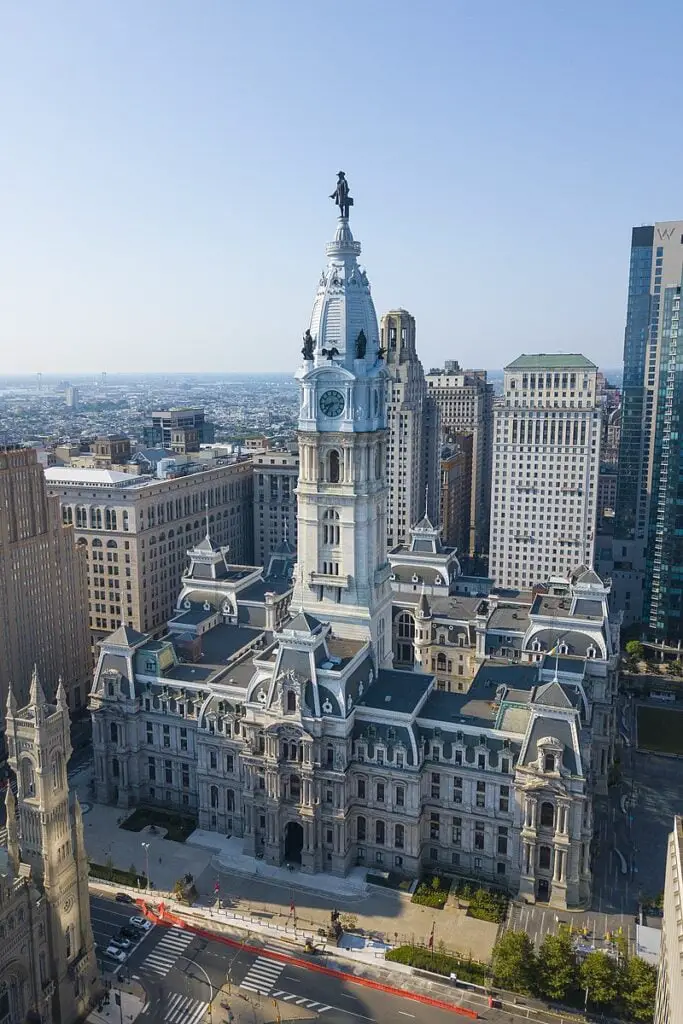
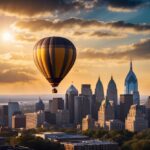
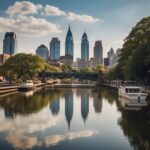

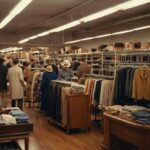
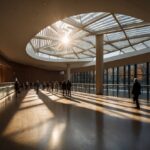


10 thoughts on “Discovering Philadelphia: A Comprehensive Guide to the City of Brotherly Love”